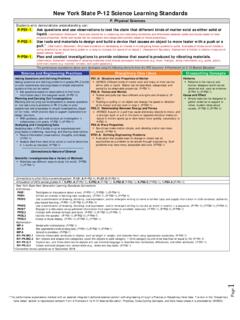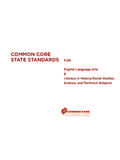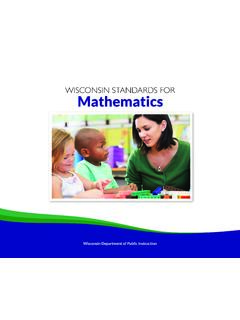Transcription of High School Mathematics: State-Level Curriculum Standards ...
1 High School mathematics : State-Level Curriculum Standards and Graduation Requirements Prepared By: Barbara J. Reys Shannon Dingman Nevels Nevels Dawn Teuscher Center for the Study of mathematics Curriculum An NSF Center for Learning and Teaching Page 2 Curriculum for High School mathematics April 2007 This report was developed as part of the work of the Center for the Study of mathematics Curriculum , supported by the National Science Foundation under Grant No.
2 ESI-0333879. Any opinions, findings, and conclusions or recommendations expressed in this material are those of the author(s) and do not necessarily reflect the views of the National Science Foundation. Curriculum for High School mathematics Page 1 High School mathematics : State-Level Curriculum Standards and Graduation Requirements In a continuing effort to improve student-learning opportunities in mathematics , state departments of education have focused on articulating Standards or learning goals at all levels, including high School mathematics .
3 A review of K-8 mathematics Curriculum Standards (many of which have been published since 2002) compiled by staff from the Center for the Study of mathematics Curriculum (CSMC) documents variation in the organization, specification, and grade placement of important learning goals across states (Reys, 2006). mathematics Curriculum Standards for high School , while less common than for grades K-8, are receiving increased attention as a means to strengthen the rigor and raise expectations for what counts as a high School diploma in the In addition, many states are increasing the number of credits of mathematics required for students to receive a high School diploma, and are also specifying particular mathematics course requirements that students must complete, such as Algebra I and Geometry (The American Diploma Project.)
4 2004). This report provides a summary of the format and organization of State-Level Curriculum Standards , graduation requirements for high School mathematics (see Appendix A). The information was gathered through searches of state departments of education websites as of 9/1/06. The information was current at the time of the release of this report but due to the continued work of states , some changes may have occurred since then. Therefore, we recommend that those interested in particular state requirements consult the appropriate website for the latest and most complete set of information.
5 Links to the mathematics Curriculum Standards pages of state department of education websites can be found at: The main elements of Appendix A include specification of: Organization of high School mathematics Curriculum Standards . Curriculum Standards for high School mathematics , like their K-8 counterparts, typically convey a set of mathematical learning expectations for all students. That is, they describe the mathematics that should be the focus of instruction and the goals for student learning. The organizational format of these Standards varies, with some states organizing learning expectations/ Standards by course and others by grade or grade-band.
6 In addition, some courses are organized by subject (Algebra, Geometry, etc.), while others are organized by integrating strands across grades (Integrated Math I, Integrated Math II, etc.). Number of mathematics courses required for high School diploma/graduation. If a state requires a minimum number of years (generally indicated by courses) of mathematics at the high School -level this minimum is specified in the table. In some cases, these requirements are determined at the local rather that state level. mathematics courses required for high School diploma/graduation.
7 If a state requires students to complete particular mathematics courses for high School graduation, those courses are specified. A summary of some of the trends apparent in Appendix A follows. Page 2 Curriculum for High School mathematics Organization of High School mathematics Curriculum Standards states generally organize high School mathematics Curriculum Standards in one of three ways by course, by grade, or by grade band.
8 Twenty states organize high School Standards by course-based learning expectations, specifying what students should know by the end of a particular course ( , Algebra I or Integrated Math I). Six states specify learning expectations by grade and twenty-eight states organize Standards by grade-band specifying what students should study within a set of grades ( , grades 9-10) or by the end of a grade ( , by the end of grade 12). The most common grade-band organization is grades 9-12 (17 states organize Standards in this way).
9 Two states (Kentucky and Massachusetts) specify Standards by course and by grade band. states that organize Standards by courses generally utilize a traditional subject-based approach. Nineteen states specify course-based learning expectations for Algebra I, twenty states for Geometry, and 18 states for Algebra II. In all but a few cases, one or more of these subject-based courses are required for a high School diploma. See Table 1 for a list of states that offer course-based learning expectations for various high School mathematics courses.
10 Six states provide Standards organized for integrated high School mathematics courses. That is, these states specify Standards for course sequences that include emphasis on multiple strands such as algebra, geometry, and statistics each year. Five states (Florida, Indiana, North Carolina, New York, and Tennessee) specify high School mathematics Curriculum Standards for both integrated and subject-based course sequences. For example, Indiana provides Standards organized into two course sequences (Algebra I, Geometry and Algebra II; Integrated mathematics I, II, III).



















